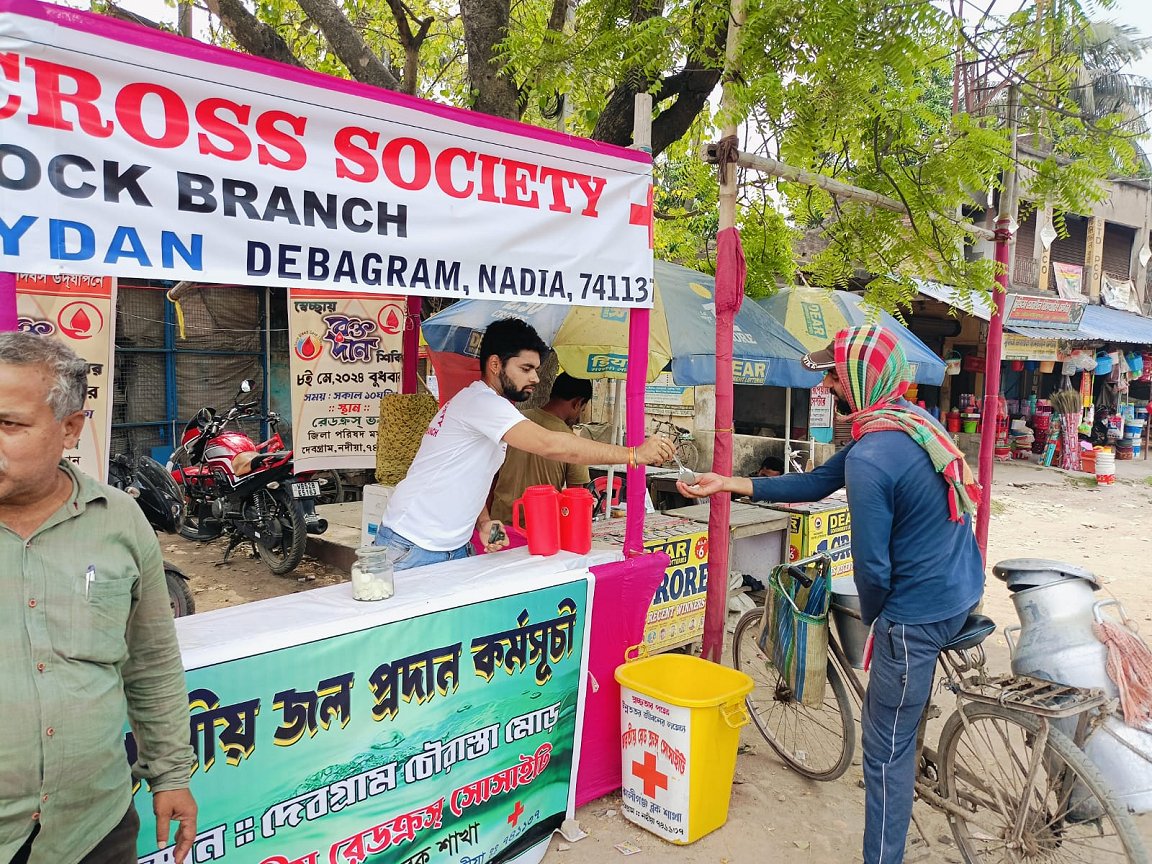
Climate change added nearly a month’s worth of extreme heat in past year – Report

By the IFRC
(This story is an IFRC press release that appeared earlier today; it has been edited slightly here for length. Register to take part in the third global heat action day this Sunday 2 June here.)
The Red Cross Red Crescent Climate Centre, World Weather Attribution and Climate Central today released a report looking at the role climate change played in increasing the number of extreme heat days around the world over the last twelve months.
It was already known that 2023 was the hottest year on record. The report confirmed that almost all the world’s population was affected by 26 extreme-heat days that would probably not have occurred without climate change.
Heat action day – organized by the Climate Centre – draws attention to the threat of extreme heat and what can be done to mitigate it. National Societies around the world are sharing ideas via a dedicated website.
As part of a heat action sprint organized alongside USAID and launched at a heat summit in late March, people are being urged to hold events and share artwork to highlight the danger of extreme heat to lives and livelihoods.
Attention is needed this year more than any other. There is an ongoing extreme heatwave in Asia across Bangladesh, Malaysia, Myanmar, Nepal and the Philippines.
In Bangladesh alone, the extreme heat has hit 57 of 64 districts, home to well over 120 million people; in Myanmar an extreme temperature of 48.2°C was recorded on 28 April – the highest ever in the country;
in Nepal, the city of Nepalgunj is in the grip of weeks of temperatures of more than 40°C.
‘We need to focus attention on
the silent killer of climate change’
There have been long-lasting recent heatwaves this year across swathes of Africa too. Extreme heat is known to have killed tens of thousands of people over the last 12 months, but the real number is likely in the hundreds of thousands or even millions.
Unlike sudden-onset weather disasters, heatwaves kill more slowly and less obviously; they are often exacerbators of pre-existing medical conditions. Heatwaves hit the vulnerable hardest: the young, the old, the poor and those obliged to work outdoors.
National Societies are at the forefront of actions to mitigate extreme heat. In Bangladesh, for example, a first-ever early action protocol for heat was activated in April, targeting 123,700 people with early warning messages, safe drinking water and oral saline solution, and cooling stations.
In Nepal, a three-year collaboration between the IFRC, the Nepal Red Cross Society, local authorities and others in the city of Nepalgunj has culminated in a detailed heat action plan, now serving as an example for cities around the world.
Cities are where extreme heat is most dangerous so that’s where efforts are focused. Locally led plans and adaptation, early warning systems, information campaigns and efforts focused on the most vulnerable are what saves lives.
Jagan Chapagain, IFRC Secretary-General, said: “Flooding and hurricanes may capture the headlines, but the impacts of extreme heat are equally deadly. That’s why heat action day matters so much.
“We need to focus attention on climate change’s silent killer. The IFRC is making heat – and urban action to reduce its impacts – a priority and remains committed to working with communities that are at risk of extreme heat through our global network of National Societies.”
Climate Centre Director Aditya Bahadur said: “This report provides overwhelming scientific evidence that extreme heat is a deadly manifestation of the climate crisis.
“This wreaks havoc on human health, critical infrastructure, the economy, agriculture and the environment, thereby eroding gains in human development and decreasing well-being – especially for poor and marginalized communities in the Global South.”
The Kaliganj Block branch of the Indian Red Cross Society recently responded to ongoing extreme heat by establishing posts to distribute drinking water and oral rehydration salts. (Photo: IRCS)